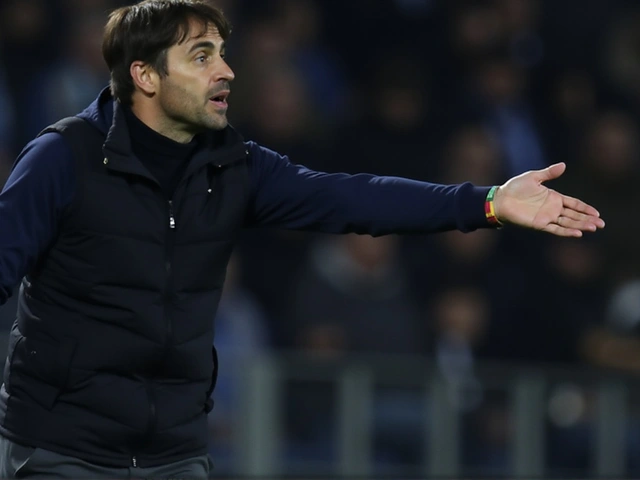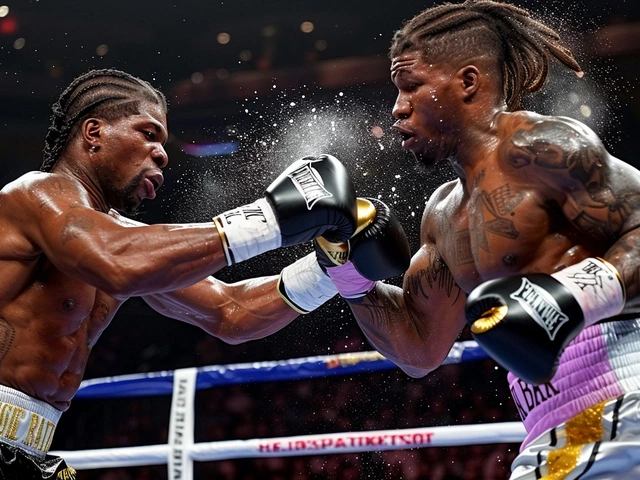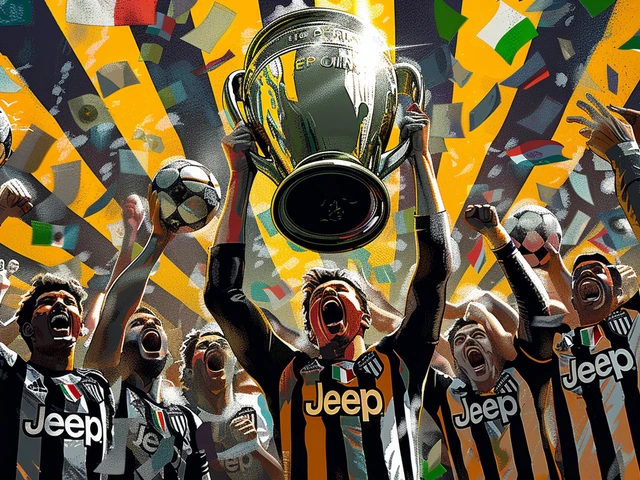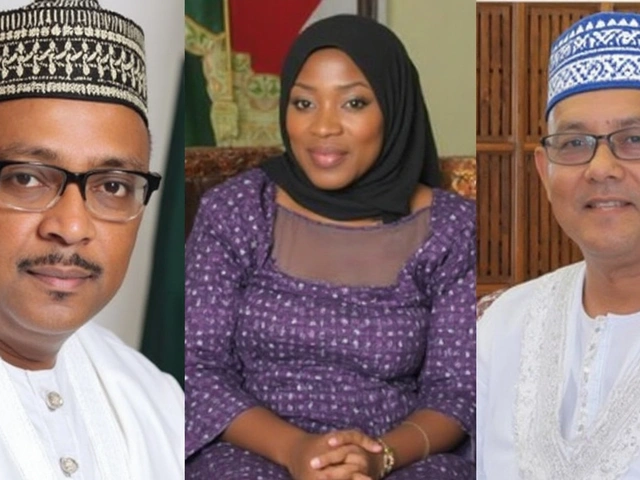Thousands Pay Their Respects at Iranian President Ebrahim Raisi's Funeral
The somber air hung heavily over Mashhad, Iran’s second-largest city, as thousands of mourners gathered to bid farewell to President Ebrahim Raisi. On a Thursday filled with both sorrow and solemn rituals, Raisi’s body was laid to rest at the Imam Reza Holy Shrine, one of Iran’s most sacred Islamic sites. The funeral came after Raisi's untimely death in a helicopter crash just days earlier, sending shockwaves not only through Iran but around the world.
Mourning Rituals and Emotional Farewells
Dressed in black, numerous mourners participated in age-old traditional mourning practices—beating their chests and heads in a poignant display of grief. The rituals mirrored a national sentiment of melancholy interwoven with reverence for the 63-year-old leader, whose short-lived presidency nevertheless left a notable imprint. The streets of Mashhad were crowded with people reaching out to touch or toss scarves and flowers onto the truck carrying Raisi’s casket, seeking a final connection with the departed leader.
The Imam Reza Shrine, an ancient and revered site dating back to the 9th century, served as a historically significant and fitting resting place for Raisi. The shrine is reputedly the final resting place of Imam Ali al-Reza, making it one of the most hallowed sites for Shiite Muslims around the globe. Mashhad residents and visitors alike gathered under a unified veil of sorrow within the shrine's sacred precincts to honor their leader and contemplate his legacy.
Raisi's Controversial Legacy
Despite the outpouring of public grief, Ebrahim Raisi's leadership was not without controversy. Once seen as a potential successor to Iran’s Supreme Leader Ayatollah Ali Khamenei, Raisi's term as president was marred by a controversial and severe crackdown on dissent. His hardline stance became particularly evident during the protests that ignited across Iran following the death of Mahsa Amini in 2022. The brutal repression of dissent that followed left a lingering divide among the Iranian populace.
While numerous supporters turned up to mourn the loss of their president, social media videos showed some Iranians celebrating the news. Sharing sweets and chocolates online, detractors expressed relief and joy at Raisi’s unexpected demise. The profoundly mixed reactions to Raisi's death illustrated the deep-rooted societal and political rifts within Iran, even as the formal ceremonies unfolded in Mashhad.
A Glimpse at the Funeral Procession
The funeral procession was a somber and organized affair. Starting from the eastern city of Birjand, it made its way toward Mashhad, drawing crowds at every stop. Thousands lined the roads, voicing their sorrow and respect with each passing moment. Although thronged with mourners, the turnout was notably smaller compared to the mass gatherings witnessed at the funeral of Revolutionary Guard General Qassem Soleimani in 2020. Soleimani's death had mobilized millions, creating a sharp contrast with Raisi's farewell.
As the truck bearing Raisi's casket moved methodically through the streets, people reached out in a gesture of solidarity and farewell. Tossing flowers, scarves, and other tokens of affection, they sought to immortalize the moment. The entire procession was meticulously overseen, ensuring that the reverence and solemnity remained unbroken throughout the journey to the Imam Reza Shrine.
Future Leadership and National Implications
In the wake of Raisi’s sudden death, Supreme Leader Ali Khamenei acted swiftly to appoint Mohammad Mokhber as the acting president of Iran. The transition came at a critical time for the nation, with a presidential election already slated for June 28, merely weeks away. The country now stands at a pivotal juncture, facing an uncertain political landscape further complicated by international dynamics.
The forthcoming presidential election is poised to serve as a critical determinant in shaping the nation's future. Amidst the diplomatic challenges, economic struggles, and social unrest, the election holds the potential to redefine Iran's direction on both domestic and global fronts. The abrupt loss of Raisi has intensified focus on this transition period, with the Iranian populace and global community alike watching intently.
The unanswered questions surrounding Raisi's death, coupled with the mixed public sentiments, shall continue to resonate in Iran's political discourse. As the nation prepares to navigate the choppy waters of its electoral process, the legacy of Ebrahim Raisi—marked by both reverence and reproach—will undoubtedly cast its long shadow on the days ahead.







Diksha Sharma May 25, 2024
lol so the helicopter 'crashed' right? 😏 guess who had access to the flight logs? and why did the CIA suddenly send a 'condolence' tweet 3 minutes after the news broke? they've been waiting for this since 2018. the whole thing was a psyop to clear the path for the mokhber puppet. they even timed it so the funeral overlaps with the election campaign. #deepstate #iranianelections
Akshat goyal May 26, 2024
Rest in peace, President Raisi.
anand verma May 27, 2024
The solemnity of the occasion, coupled with the profound historical weight of the Imam Reza Shrine, underscores the gravity of this moment in Iran’s contemporary history. The convergence of religious reverence and political mourning reflects a deeply rooted cultural synthesis that transcends partisan divisions. One cannot help but reflect upon the enduring role of sacred spaces in mediating collective grief.
Amrit Moghariya May 27, 2024
so let me get this straight - thousands are crying over a guy who cracked down on women for wearing hijabs wrong, but when the same people see a cat video, they scream 'this is the best day of my life'?? 🤡 the performative grief is stronger than the actual grief. also, the flowers? cute. the real protest was on Twitter last year. no one brought flowers then.
shubham gupta May 29, 2024
The transition to acting president Mokhber was constitutionally sound and executed with procedural clarity. The upcoming election on June 28 will be a critical test of institutional resilience. Historical precedent suggests that leadership transitions following sudden deaths often accelerate political realignment, particularly in systems with centralized authority structures.
Gajanan Prabhutendolkar May 31, 2024
Let’s be honest - Raisi was never meant to be president. He was a placeholder, a sacrificial lamb for the deeper power brokers. The crash? Convenient. The timing? Perfect. The media silence from Western outlets? Suspicious. And don’t get me started on the 'mourners' - half of them were paid by the IRGC. You think people really care about a man who presided over mass arrests? No. They care about the state’s narrative. The shrine? Just a stage. The real funeral was in the boardrooms of Tehran’s Revolutionary Council.
ashi kapoor May 31, 2024
ok but like... imagine being the person who had to pick out the casket for a guy who banned Spotify and called TikTok 'western moral decay' 😭 i mean, he probably wanted a black velvet one with gold embroidery and a QR code that plays his 2019 speech on 'Islamic modesty'... and then you have these people throwing flowers like it's a pop concert??? the cognitive dissonance is giving me a headache. also, why is no one talking about how the helicopters were all made in Russia? just saying. 🤔💔
Yash Tiwari June 1, 2024
The outpouring of grief, while ostensibly organic, must be contextualized within the framework of state-managed affective politics. The ritualized chest-beating, the floral offerings, the synchronized procession - these are not spontaneous expressions of mourning, but highly choreographed performances of ideological loyalty. The regime leverages religious symbolism to consolidate legitimacy, and Raisi, as a jurist of theocratic orthodoxy, was its most effective vessel. The celebrants on social media, meanwhile, represent the suppressed counter-narrative - a silent, digital resistance that will not be erased by state propaganda.
Mansi Arora June 2, 2024
i mean... raiisi was a monster but like... the way they carried his body like its a movie scene?? everyone was crying but i saw a video of a guy laughing behind the crowd like 'finally' 😭 the whole country is split and no one wants to admit it. also why is the news only showing the old people crying? where are the youth? they were the ones getting arrested. this is so fake. #iran #lies
Amit Mitra June 3, 2024
I find it fascinating how the Imam Reza Shrine, as a site of pilgrimage for over a millennium, has now become a locus of modern political mourning. The convergence of spiritual sanctity and state ritual creates a unique space where personal grief and collective identity intersect. One might even argue that the shrine’s enduring presence provides a continuity of meaning that transcends transient political figures - even those as polarizing as Raisi. The cultural weight of such spaces should not be underestimated.
sneha arora June 4, 2024
i just wanna say... everyone deserves to be remembered with kindness, even if they made mistakes 🤍 the flowers, the tears, the scarves... it’s beautiful. i hope the next leader listens to the quiet ones too. the ones who didn’t scream but still hurt. 🌸🕊️
Sagar Solanki June 5, 2024
The entire spectacle is a textbook case of neopatrimonial performative governance. The IRGC, leveraging its control over the security apparatus and media infrastructure, has engineered a posthumous mythologization of Raisi to ensure continuity of theocratic hegemony. The funeral, while ostensibly a religious rite, functions as a legitimizing ceremony for the succession protocol - one that deliberately marginalizes pluralistic dissent under the veneer of national unity. The celebrants on Telegram? Merely the vanguard of a nascent counter-hegemonic movement, now forced into digital exile.